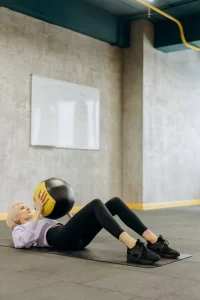Six Bad Habits that Could Harm You at the Piano
Retired can be tiring to sit on a bench at the piano without any back support. It is easy for your back to slump if you spend a lot of time at the piano. While this may feel great at the moment, it can lead to long-term issues.
You might think that playing the piano is only a matter of your 10 fingers. To play the piano well, you must engage your whole body. Your spine and back must be strong enough to support you while playing the piano so your fingers, arms, and hands can freely move.
It becomes more difficult to control your hands if you disengage your spine and core. If we don’t control our hands, our technique can become messy, and tension builds up, causing pain.
A rounded back can cause long-term discomfort and pain in the back, neck, and shoulders.
Dropped Wrists
It is so important to keep your wrists straight while playing!
Piano players are familiar with carpal tunnel. Your wrists should be at the same level as your fingers when holding the keys. Your risk of developing carpal tunnel is high if your wrists are too low. This can prevent you from playing the piano or may even require surgery.
However, don’t place your wrists in an uncomfortable position or create tension. Your wrists should be loose and flexible so they can move freely when you play the piano.
Too Close to the Piano
Many people believe that the piano bench should be scooted under the piano like sitting at a desk or table.
This is, however, not the case. The piano is a long distance from pianists. The bench should be positioned a bit away from the piano. You will want to sit on the bench’s front half and lean forward towards the keys. The bench should be a little further back than you might expect to do this comfortably.
If your arms extend out enough to reach all the keys, you will know that you are in the right place. Although you may need to lean to one side or the other to reach the piano’s ends, your arms should be fully extended.
If you get too close to the piano’s keys, your arms may feel stuck, and it may be not easy to move beyond the piano’s middle range.
It can be not easy to use the footswitch if you are too close. Your leg will feel tight under the piano, and your foot won’t move as easily.
You can sit further away from the piano and extend your leg towards the pedal. Keep your heel on the ground, and you can pedal easily.
Raise or tighten your shoulders
For pianists, the most commonplace to feel tension is in their shoulders. Most pianists have likely seen their shoulders drooping towards their ears. Often, we don’t notice this happening.
However, if our shoulders are tightened, it can cause a domino effect in our arms, hands, and fingers. This is another situation where your technique and form can be affected by tension. You can also experience a lot of pain and discomfort.
It is a good idea for you to check your body during practise sessions regularly. If your shoulders are tightening or raised, release them.
Tension in Your Hands
Tense, tight hands can cause many problems when you play the piano. Repetitive movements like playing the piano keys can cause injury if your hands are tightened. You will feel the pain in your fingers and wrists.
To avoid tension in your hand, place your hand on your side and let your arm fall naturally from your body. Your hand will naturally curve in a quiet and natural position. Keep your hand in the same position as before. Your goal is to keep your hand in this soft, round position as you play. If your hand feels loose, it’s okay. Over time, you can build strength and control. It will allow you to practice without tension.
Playing through Pain or Discomfort
Piano players make the most common mistake: they ignore discomfort or pain while playing. The piano should not hurt or make you feel uncomfortable. If you feel pain, it is a sign of something wrong in your body.
Regularly check in with your body to assess how it feels. Make adjustments to make it feel better if something is bothersome. If your pain persists, seek professional help.














Post Comment